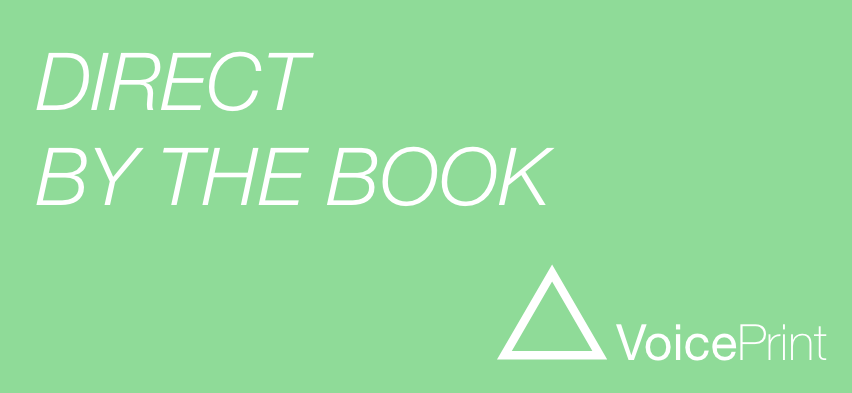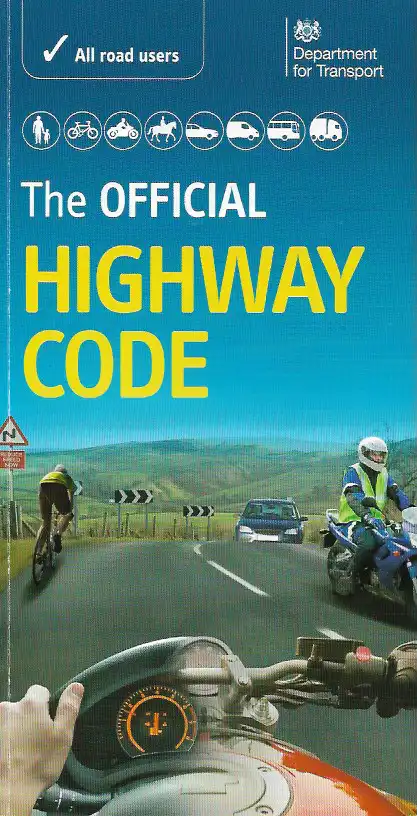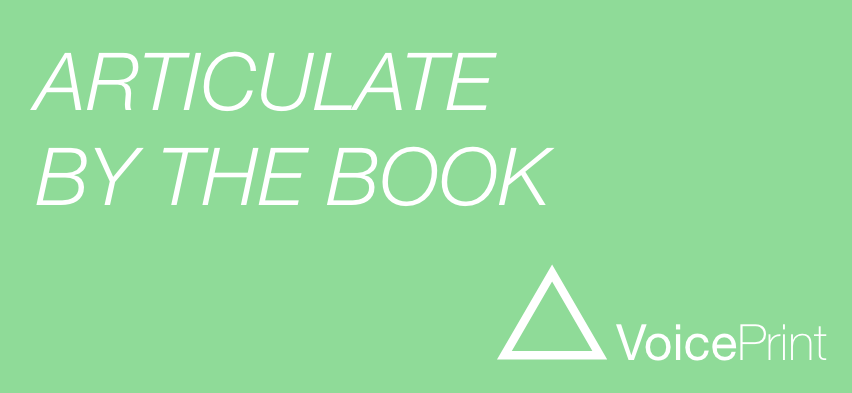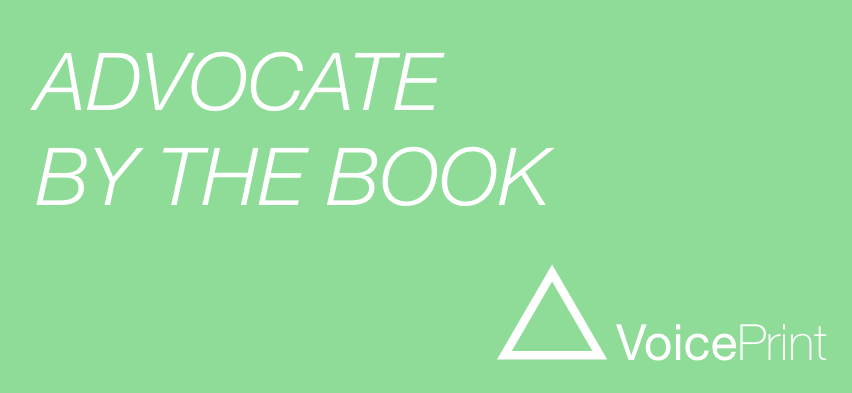
It’s harder than you might expect to find a book to exemplify the use of the Direct voice. But choosing one is an instructive process in itself: it highlights important aspects of what makes the Direct voice work in practice.
Direct is the voice that calls (or recalls) attention to responsibilities, the voice that defines rules and boundaries, that spells out expectations and requires compliance.
My first thought was to draw examples from the world’s ‘religions of the book’, Judaism, Christianity and Islam, and their respective ‘rule books’ – the Talmud, the Bible and the Quran. But the very existence of different religious authorities highlights the point that people have to accept an authority before they will act on its directives. The Direct voice has no power over the listener who does not subscribe to the authority behind it.
So I turned to the philosophers and their writings on ethics. But again there are so many competing claims, Plato and Aristotle, Kant, John Stuart Mill, Nietzsche, Sartre… The list goes on and on. And that’s not the only issue with this category of directives. They’re also not easy to grasp. Dip into the Analects of Confucius, for instance. While the meanings of some seem clear, others are much less so. ‘Never give a sword to a man who can’t dance.’ ‘What can a man do with music who is not benevolent.’ ??? In order to work effectively, at least on the rational mind, the Direct voice needs to be unambiguous, direct and plain-speaking rather than indirect and open to interpretation.
So, to illustrate good use of the Direct voice, I’ve opted for a book that is secular, prosaic, more contemporary, more readily intelligible and more universally acceptable: The Highway Code.

How does the Highway Code help us to understand and use the Direct voice?
First, notice its strong emphasis on verbs, the ‘doing’ words. The Direct voice tells people what to do, and of course what not to do. Here are the first two examples that come up, when I open the Code at random.
‘Drive at a steady cruising speed which you and your vehicle can handle safely and is within the speed limit.’ [260, page 87]
‘Do not hold up a long queue of traffic, especially if you are driving a large or slow-moving vehicle. Check your mirrors frequently, and if necessary, pull in when it is safe and let traffic pass.’ [169, p58]
But read on and you notice a second feature of the Direct voice. It doesn’t just deal in absolutes; it is more nuanced than that. As well as prohibitions (You MUST NOT) and positive instruction (You MUST), the Highway Code, and likewise the Direct voice, includes varying degrees of direction and constraint, including alerting, warning, guiding and pointing as well as outright command.
‘Before setting off you should ensure that you have planned your route and allowed sufficient time.’[97 p30]
‘In the event of a breakdown, be aware that towing a vehicle on a tow rope is potentially dangerous. You should consider professional recovery.’ [98, p 31]
‘Always try to use dropped kerbs when moving off the pavement, even if this means travelling further to locate one.’ [40, pp 15/16]
‘It is strongly recommended that a fluorescent/reflective tail light is also worn by your horse.’ [51, p 19]
These gradations of wording blur the line between the Direct voice and the Advise voice, between what is required and what is preferred, between what is non-negotiable and what is merely recommended. If you want to prevent your communications from falling into the grey zone, where your expectations become less clear and more liable to be disappointed, then you need (to borrow a motoring metaphor) to signal your intention very clearly.
This brings up a third point about the effective use of the Direct voice which the Highway Code illustrates well. Look at the section on road signs. Quite apart from the reminder that hand signals can be a useful and appropriate way of reinforcing the nature of what you’re saying, the use of different shapes, colours and sizes of signage is analogous to the need to make use of the available non-verbal indicators, like tone, pace, stance and volume, to clarify your spoken message.
What, we might ask ourselves, is the non-verbal equivalent of the red triangle (the warning sign, and usefully related to VoicePrint’s pressure profile graphic)? What is the non-verbal equivalent of the sign enclosed in a red circle (usually a prohibition), or the blue circle (positive instruction) or the variously coloured rectangles (directional pointers and sources of information)?
Road signs, and their verbal and non-verbal equivalents, are a vital part of the Direct voice, because they clarify context. They point out when and where particular rules apply.
The broader point that this underlines is that the Direct voice is never used in a vacuum. This is true of all the voices, but Direct may be the one that needs to be deployed with the greatest care. It is certainly the one among the nine voices which leaves least room for interaction or response. It’s always aimed at someone (sometimes yourself) with the intention of getting them to do something (or to stop doing something). So the issue of how it lands with the person at whom it is directed is of prime importance. It won’t shape behaviour, unless it is delivered with skill.
Part of the skill of using any of the voices lies in not over-using it. And part of that skill is recognising when to move on into a different voice and which of the other voices will support and develop a productive conversation. That’s the other sense in which none of the voices exists in a vacuum. Interactions combine different voices. They need to. Utterances may come in a single voice, but conversations do not.
One of the voices which can most usefully accompany the Direct voice is the Articulate: instruction enhanced by explanation. There are many examples in the Highway Code.
‘There is a risk of pedestrians, especially children, stepping unexpectedly into the road. {Articulate} You should drive with the safety of children in mind at a speed suitable for the conditions.’ {Direct} [205 p 70]
‘Certain motorised vehicles do not meet the construction and technical requirements for road vehicles and are generally not intended, not suitable, and not legal for road, pavement, footpath, cycle path or bridleway use.’ {Articulate}…’These types of vehicle MUST NOT be used on roads, pavements, footpaths or bridleways.’ {Direct} [157, p 52]
Explaining the reason for a rule can make it more compelling, or perhaps more persuasive. It’s an important consideration in an age when traditional authorities have lost people’s respect, or in cultures where individuality is valued more highly than collective responsibilities.
If we become poor observers of the Highway Code, it is probably because routine leads us to acquire our own particular habits as drivers, including the illusion of confusing our ability to control our own vehicle with the ability to control outcomes in the traffic system. Likewise with the Direct voice. It’s not just that habit can make us a poor user. The Direct voice is a potentially high impact vehicle operating in a social space.
The most common failings with Direct in practice are either too much accelerator or too much brake. Some people simply give it too much power. They over-do it, say too much or say it too forcibly with the result that it creates resentment rather than acceptance and compliance. Others restrain it too much. They are too indirect, blurring the message to soften the impact, and then failing to make their point.
The underlying issue in both cases is the social risk, the danger of causing offence, that comes with the use of the Direct voice. Traffic Wardens can at least acknowledge the problem, when they find themselves confronted by an angry parking offender, with the riposte, ‘Sorry, mate. I don’t make the rules.’ But Traffic Wardens don’t have to maintain an ongoing relationship with the parking offender. Leaders and managers do not have that option. They have to shape and maintain patterns of working practice and patterns of working relationships. They have to set and manage the code. They have to take responsibility for specifying others’ responsibilities and they have to do it in a way that ensures that those responsibilities are met.
The recurrence of the Articulate voice alongside the Direct in the Highway Code is a reminder that managers cannot go straight to enforcement; they need to spell out their requirements and expectations first before they can expect to obtain others’ compliance. That’s the point of the theory test in the driving test. And it means that ignorance of the rules can be no defence, when they are broken.
That’s only fair. And ultimately the Direct voice won’t function at work, if it doesn’t seem fair.
So, by way of closing, here’s a short quiz to see how well you know the Code.
- Who has priority on the pavement: the wheelchair user or the pedestrian?
- Are you permitted to ride a bicycle when under the influence of drink?
- How many rules are there in the official Highway Code?
- It’s against the rules to sound your horn during the hours of darkness, but how does the Highway Code define the hours of darkness?
- At what time in the 24 hour clock is our natural alertness generally at a minimum?
- What responsibility do you have if you are dazzled by oncoming headlights?
- What’s the rule against smoking in a car?
- Which parts of your vehicle must you keep clear of snow?
- Which side of the lollipop lady should you pass?And in case you’re tempted to give up driving all together…
- Where should horse riders be when using roundabouts?
Here’s where you’ll find the answers:
- Rule 38, page 15
- Rule 68, page 24
- See page 101
- Rule 113, page 37
- Rule 91, page 28
- Rule 115, page 38
- Rule 148, page 49
- Rule 229, page 77
- Rule 29, page 13
- Rule187, page 65
The Official Highway Code is published by the Driver and Vehicle Standards Agency for the Department of Transport, ISBN 978 011 553342 6
Citations are from the 2015 Edition
Ready for a conversation?


